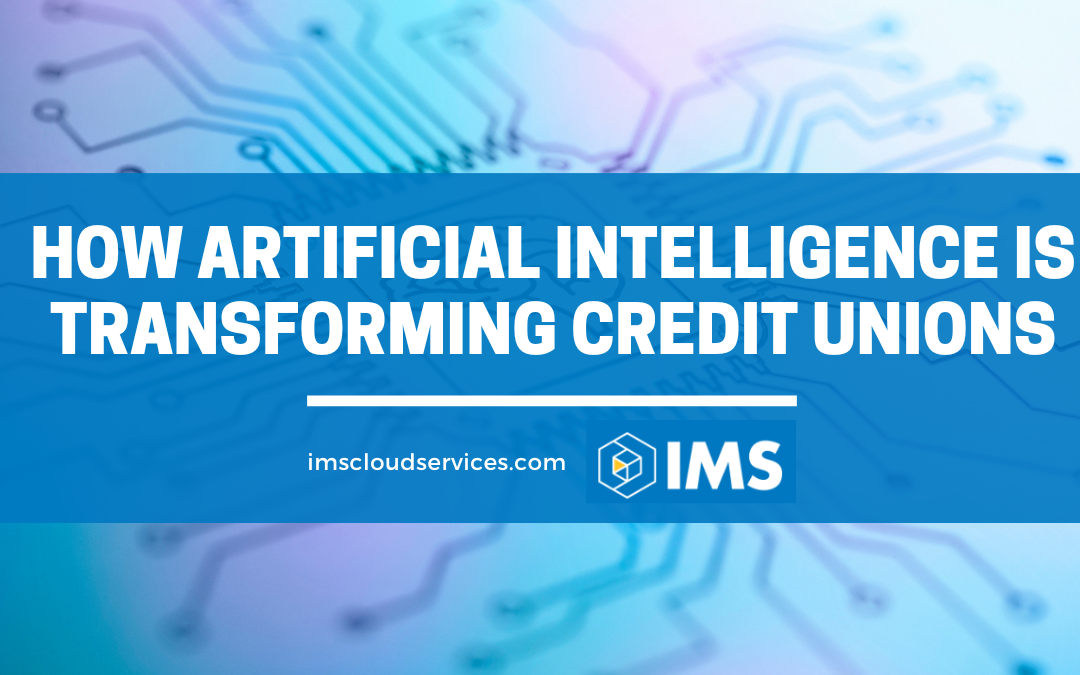Artificial intelligence (AI) has become a part of our daily lives. More often than not, the average consumer isn’t even aware of how deeply integrated it already is. From voice assistants to recommendation algorithms, AI is making its mark on industries and influencing customer expectations. Financial institutions, including credit unions, are also adopting AI to meet these changing demands and stay competitive. Let’s explore how credit unions, even with smaller budgets and teams, can effectively leverage AI to drive success in the digital age.
The Importance of Artificial Intelligence in Credit Union Operations
As credit unions navigate the challenges of the modern financial landscape, AI offers a host of benefits. By harnessing the power of AI, credit unions can streamline operations, enhance member experiences, and make data-driven decisions that drive growth. Take a look at some key areas where AI can make a significant impact on your credit union:
1. Personalized Member Experiences
AI-powered technologies, such as chatbots and virtual assistants, enable credit unions to provide personalized and efficient member experiences. These intelligent systems can handle routine member queries, assist with account management, and even offer financial advice tailored to individual needs. By leveraging AI, credit unions can deliver exceptional member service, building trust and loyalty in an increasingly digital world.
2. Fraud Detection and Prevention
Fraud detection and prevention are key concerns for credit unions. AI algorithms can analyze vast amounts of data to identify patterns and anomalies that indicate potential fraudulent activity. Machine learning algorithms can continuously learn and adapt to new fraud patterns, enhancing the accuracy and efficiency of fraud detection systems. By leveraging AI in fraud prevention, credit unions can safeguard their members’ assets and protect their reputation.
3. Risk Management and Compliance
Credit unions face various risks, including credit risk, compliance risk, and reputational risk. AI-powered risk management systems can analyze extensive datasets, identify potential risks, and provide proactive solutions to mitigate these risks. Additionally, AI can help credit unions stay updated with changing regulatory requirements, ensuring compliance and avoiding penalties. By adopting AI-based risk management solutions, credit unions can enhance their strategic decision-making processes and protect their long-term sustainability.
4. Data Analysis and Decision-Making
Data analysis is crucial for credit unions to gain insights into member behavior, market trends, and operational efficiency. AI-powered analytics tools can process vast amounts of data quickly and accurately, uncovering meaningful patterns and trends. This empowers credit unions to make data-driven decisions, tailor their products and services to member needs, and identify new growth opportunities. By leveraging AI in data analysis, credit unions can stay ahead of the competition and drive business success.
Overcoming Challenges: How Credit Unions Can Embrace Artificial Intelligence
While AI offers immense potential for credit unions, there are challenges to consider, such as limited budgets and resources. However, with a strategic approach, credit unions can effectively embrace AI and compete in the evolving digital landscape. Here are some strategies to consider:
1. Collaborate with Fintech Partners
Credit unions can collaborate with fintech partners specializing in AI solutions. These partnerships can provide access to cutting-edge AI technologies without the need for significant upfront investments. By leveraging the expertise of fintech partners, credit unions can navigate the complexities of AI implementation and ensure successful integration into their operations.
2. Start Small and Scale
Implementing AI solutions can be overwhelming, especially for credit unions with limited resources. It’s essential to start small and focus on specific use cases that align with the credit union’s goals and member needs. By starting with manageable projects, credit unions can gain valuable experience and gradually expand their AI capabilities.
3. Invest in Employee Training
Successful AI implementation requires a workforce equipped with the necessary skills and knowledge. Credit unions should invest in training programs to upskill their employees and build an AI-ready workforce. This investment not only enhances the credit union’s AI capabilities but also empowers employees to embrace and leverage AI technologies effectively.
4. Prioritize Data Security and Privacy
As credit unions adopt AI, ensuring data security and privacy is paramount. Credit unions must comply with data protection regulations and implement robust security measures to safeguard member information. By prioritizing data security and privacy, credit unions can build trust with their members and maintain a strong reputation.
Keep Sensitive Data Safe Alongside AI Implementation with IMS
As credit unions embrace the boundless potential of artificial intelligence to personalize member experiences, fortify against fraud, and navigate intricate risks, they require a strategic and resilient safeguard.
IMS’s Polaris Radar provides a crucial layer of protection through its advanced anomaly detection service, ensuring rapid recovery and bolstering credit unions’ security posture. This isn’t just about adopting AI — it’s also about securing your credit union with cutting-edge resilience. Connect with IMS to learn how our anomaly detection services can empower your credit union in providing secure, community-focused banking experiences.

